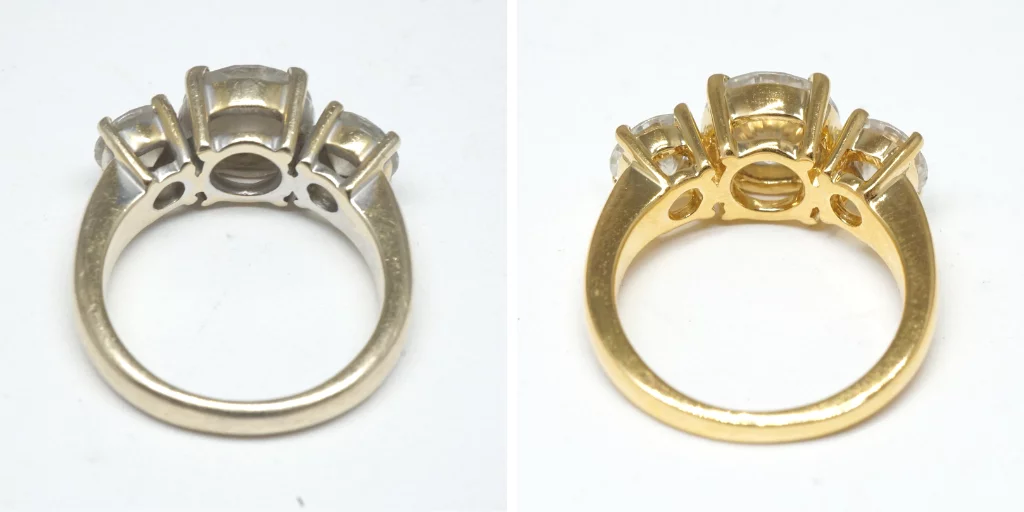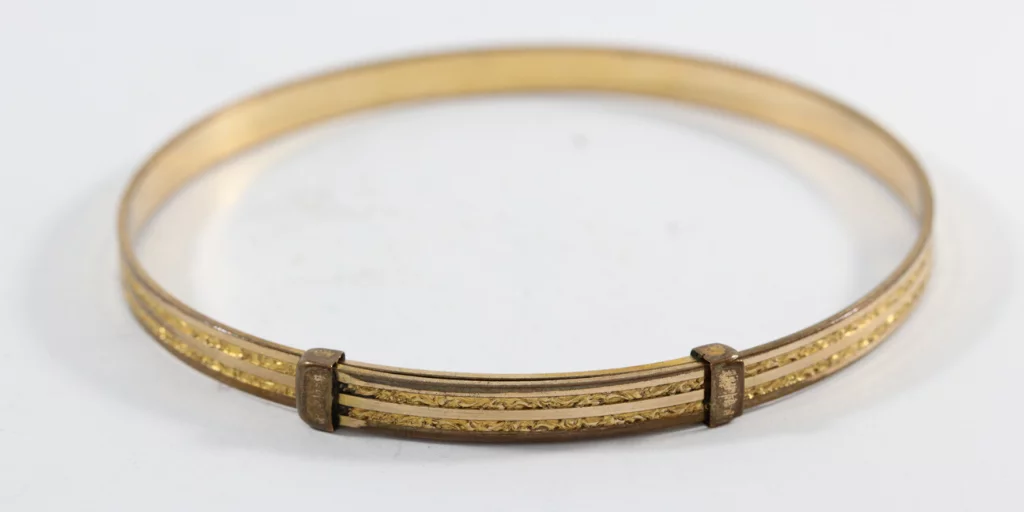Gold Plating Jewelry Thickness: What You Need To Know
Written by Annabelle
September 16, 2019

You have a piece of jewelry, or a watch, and you’re not really too sure what to do when it comes to gold plating. Maybe you just want a brief hint of color. Maybe you want it to last long enough for years to come. Whatever it is, you don't know the gold plating thickness you should get. And how long will it even last?
Fortunately enough, there’s a standard for every type of item that takes plating. Read on to learn more about gold plating thickness standards.
Gold Plating Thickness: How is it measured?
When most people think about gold-plating an item, they think that it’s like dipping their item into paint. While that’s true on an aesthetic level, there’s actually a scientific measurement used in the process of gold-plating, and jewelry manufacturers use it to differentiate between lower-end plating and higher-end plating.
The two categories of gold plating are flash plating, and micron plating. Flash plating only gives a piece of jewelry a really quick recoloring- because of how thin the plating is, it’s not a durable and long-lasting option for hard-wearing pieces such as rings or bracelets.
Micron plating, on the other hand, is where the measurement comes in.
What’s a Micron?
A micron is 0.001 of a millimeter. It’s a little hard to visualize, but basically any gold plating that’s 1 micron or up is good quality gold plating. As a comparison, flash plating is less than one micron- it’s actually under 0.175 micron. You can imagine how thin that is considering the size of a regular micron.
For every type of jewelry, there’s a recommended micron thickness. Here’s the chart below:

How long will my plating last?

This question is a bit tricky to answer. Just because you plate something in 3 microns doesn’t mean it won’t wear out quickly.
But why, you ask? Well, it all boils down to your lifestyle. Someone who works at a computer desk all day and is conscientious about taking their jewelry off before washing it will have a longer-lasting gold plating. On the other hand, if you enjoy cooking or construction work, and you sleep, swim, and shower without taking any of your jewelry off, you can kiss that plating goodbye in about a month or less.
Remember that gold plated jewelry is just that- a thin layer of gold over a base metal. Like paint, it will peel and chip off if you subject it to constant abrasion. You don’t drag sandpaper over your favorite painted furniture, so why would you do that to your jewelry?
A special mention also goes out to certain people with interesting body chemicals. Some people sweat a lot, and without venturing too far into the icky part of the subject people can have varying levels of acid in their sweat. If you don’t wipe down your jewelry after wear, those oils and other fluids from your daily routine will eat away at your jewelry. It’s why a lot of costume jewelry starts to smell bad and turn color after long periods of wear.
How do I take care of my gold-plated jewelry?

A few basic rules apply: take rings and bracelets off when you need to do something that requires a lot of work with your hands. Take them off when you’re cleaning, cooking, swimming, or showering- chemicals in the water or from cleaning products will eat away at gold, especially chlorine. Wipe your jewelry down with a soft cloth after a day of wear, and make sure to store it in a proper location. Again, how fast the plating wears off will ultimately depend on you and your lifestyle, so do what you can to get the most out of your gold plating.
Gold Plating Prices
The gold plating cost depends on the base metal, type of plating you want, and the size of the item. Certain metals are much more difficult to plate than others; for instance, while gold can be applied straight to sterling silver, copper needs a plating of palladium or nickel before it can take gold plating properly. This additional treatment will raise the cost of plating.
If you want flash plating, a base price for something small like a ring will start at $60. Expect at least an additional $50 or more if it’s a large piece such as a thick chain necklace.
Micron plating is comparatively more expensive, because you’re plating with more gold. With every additional micron you plate, expect a corresponding increase in price.
Now you should be aware of what gold plating thickness to choose when plating your jewelry! To get started, check out our gold electroplating service.



Great stuff
Hi, following the information about gold thickness and qualities in general . Am very much happy the stuff as senior technician that field very much enthusiastic about the well described application of the plating related stuff . Thank you very much and really appreciated
I realised there are some missing words with my comments. But willl appreciate if you did understand my point. Many thanks.
For the “average” person who wants to buy a pair of earrings, bracelet or necklace what would be the “best of the best” for microns to last years? Please tell. Thank you.
Hi Lisa, We would suggest at least 2 microns of plating and keeping the piece away from any moisture!
heeey!!
I just got a watch from my grandma and it has 1 micron gold written back on it and I don’t really know if it’s real gold or not. Can someone help please 🙏
thank u
Yes! I can help….Read the article above! It explains the answer to your question in depth!
How is the thickness measured ,eg ,time in the solution ? Repeated dips ,etc ,and could you for example put an exceptionally thick coating etc say 10microns
Yes, DUH! If you had read the article above, you would have noticed a chart with recommend micron amounts for various pieces of jewelry! READ!!!
Standard for plating used to be 20 to 40 microns. Anything under 5 microns was called “gold flash”. I wouldn’t touch modern gold plated jewellery with a ten-foot pole. But vintage 40 micron plated jewellery is a steal.